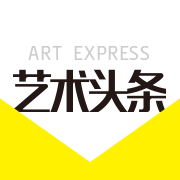
Sasha Grishin Talks Writing the First Comprehensive Overview of Australian Art
2014-06-25 10:22:51 未知
It is no surprise that few writers have taken on the epic task of summarizing and contextualizing Australia’s complex art history. In fact, Australia has been without a comprehensive overview of its art — until now, that is. The recent release of Professor Sasha Grishin’s magnum opus, “Australian Art: A History” is a major milestone for Australian art. The 300,000-word book is the first single volume summary of the major developments in Australian art, from the ancient to the contemporary.
As one of Australia’s most knowledgeable and widely published art historians, Grishin, the Sir William Dobell Professor of Art History at the Australian National University, is arguably the most qualified person to write a history of Australian art. During his 35-year career, he has written 24 books and more than 2,000 articles on various aspects of art, mostly Australian. “Australian Art: A History” is the culmination of more than 30 years experience in Australian art and the product of 7 years of research and writing. To find out more about “Australian Art: A History” and the background of the publication, we got in touch with Professor Grishin to ask him a few questions.
What prompted you to take on the herculean task of writing a history of Australia art?
I love art in general and Australian art in particular and after working professionally in the field for over 35 years, I increasingly felt that there was need for an extensive single volume that would examine the whole of Australian art: Indigenous and non-Indigenous, from rock art to the present, examining many of the art mediums. It was not going to simply be a book on Australian painting, like the wonderful squeaky classic by Bernard Smith published in 1962, or the very short surveys by Chris Allen or Andrew Sayers, or the multi-volume ongoing edition by John McDonald, but a single volume which was going to tackle the whole lot. In the end it became a very long text — about 300,000 words and weighs in at about 600 pages.
How did you approach the contextualization and interpretation of the many and varied facets of Australia’s complex art history?
Who should write such a book? Common sense suggested that one should do this through a committee, a sort of an anthology, where from 20 to 50 authors would write an essay on their area of expertise. I don’t like committees. Anthologies may be useful within an academic community, but if you are trying to promote and make a case for Australian art, you need a story line and a narrator who will tell this story. One voice, one author and not a herding of cats.
How can one author get it all right? The answer — with a little help from his friends. Of course I am walking tall by standing on the shoulders of those who wrote before me, hence the enormous bibliography. More importantly, are the many hundreds of artists who have allowed me into their lives and their studios — you learn more about art in an artist’s studio, than you do in any library. Then I created my Council of Twenty Elders, the experts in the field, to whom I sent drafts of all my chapters for comment. Without their input, this would have been a much poorer book.
If “Australian Art: A History” is a reappraisal of Australia’s art history, what does the book reveal about the history of Australian art that differentiates it from other such texts?
The short answer is that no one has attempted on such a scale to examine the history of Australian art: both the Indigenous and non-Indigenous history. What it reveals is that Australian art is a single continuous tradition where there exists a constant dialectic between indigenous and non-Indigenous art.
What surprised you most about what you learnt from writing the book?
A great deal — richness, depth, diversity of Australian art as a national story, from north Queensland to Tasmania to Western Australia, Australian art is not the history of art in Melbourne and Sydney.
You describe “Australian Art: A History” as “an act of advocacy.” With this in mind, what do you hope to achieve with book?
My basic contention is that Australian art, at its best, compares favorably to art anywhere in the world and it is time for us to get behind it and to make the strongest case that we can for it. That was my intention.
What facet of Australia’s art history did you most feel the need to redress, and why?
There is a long catalogue of facets of Australian art history which I redressed, in many periods of our art. For example, in Australian etching in the first half of the 20th century, the outstanding artist was not Lionel Lindsay, or Norman Lindsay or Sidney Long, but a woman — Jessie Traill. A key artist in the Heide Group was Joy Hester. Possibly the most important contemporary Australian sculptor is a woman, Inge King, and so on. There is much which will be deemed as controversial, but I felt that it had to be said.
(责任编辑:张天宇)
注:本站上发表的所有内容,均为原作者的观点,不代表雅昌艺术网的立场,也不代表雅昌艺术网的价值判断。

 在回溯中理解当代艺术“何以如此”
在回溯中理解当代艺术“何以如此” 对话 | “道法自然” 范一夫山水中的破界与归真
对话 | “道法自然” 范一夫山水中的破界与归真 张瀚文:以物质媒介具象化精神世界
张瀚文:以物质媒介具象化精神世界 吕晓:北京画院两个中心十年 跨学科带来齐白石研究新突破
吕晓:北京画院两个中心十年 跨学科带来齐白石研究新突破
全部评论 (0)